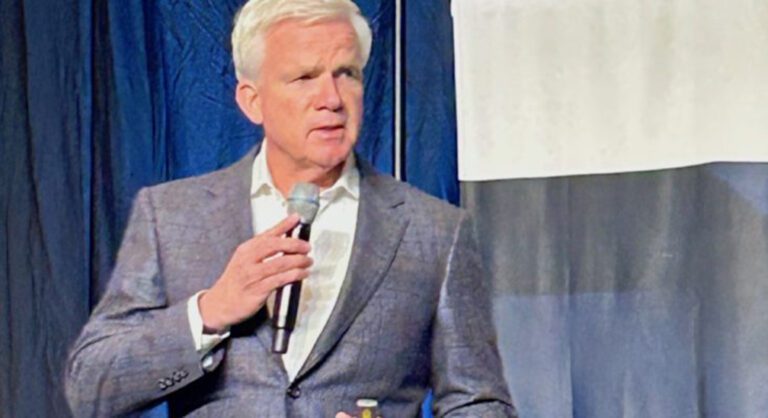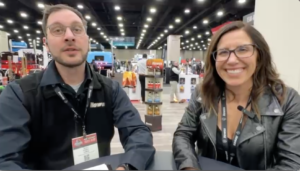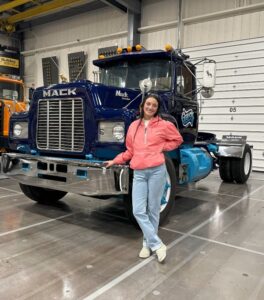LOWELL, Ark. — “Just because something appears to be better for the planet does not necessarily mean it is.”
J.B. Hunt’s Vice President and Chief Sustainability Officer, Craig Harper, spoke these words on Nov. 1 at the Northwest Arkansas Tech Summit, held in Rogers, as part of an overall discussion about the challenges and concerns of electric vehicles.
Since 2016, Harper said he has immersed himself in learning about electric and self-driving vehicles.
“We have to be educated about all forms of energy today, understand where it comes from and what its by-products are and impact on people around the world,” Harper said. “There’s been a ton of progress made since 2016, but we still have many challenges as technology is ahead of infrastructure and also policy in many cases.”
While there are challenges, Harper said he “can’t wait to have more zero-emissions trucks. We have five of those today (at J.B. Hunt), and drivers love them. You don’t smell like diesel; they are quiet and powerful, but there are problems. You don’t have the range that is one-fifth of what diesel provides. It also weighs more, and it takes longer to charge. It costs three times as much as a diesel rig, and if you can find a charging station and it is working.”
Harper said his research showed that 21% of charging stations are down at any given time, according to J.D. Powers.
“With all of those issues, we have policy coming that will require electric vehicles, and we will see where all this shakes out,” Harper said. “We are applying for the power we will need to fuel these vehicles. That’s why I learn all I can about access to clean and reliable energy.”
According to the International Energy Agency, for countries that want to meet their climate goals and achieve energy security priorities by 2040, millions of transmission line miles must be added or replaced. The estimated cost to invest in upgrading the grid is about $600 billion annually.
“We have to get more electricity around the world, but it’s confusing to understand which way we should go,” Harper said. “That’s why we have gathered all the information we can. Before we make some bold statement or get on the bandwagon to cut off one energy source, we need to understand that the whole world needs more energy, some just to improve their daily lives, others to power their plants and operate their infrastructures. The world needs more, not less.”
The average age of power plants in the U.S. is about 29 years.
The 400 coal plants have an average age of 45 years. Of the 1,743 power plants that run on natural gas, their average age is 22 years. The 61 nuclear plants have an average age of 39 years. In 2022, the total electricity sourced in the U.S. from renewable methods such as wind, water, solar, biomass and geothermal was 21.5%. Nuclear was 18.2%, coal 19.6% and natural gas was 39.8%.
“No one wants to do with less,” Harper said. “We have to find a way to be more sustainable around the globe, across our companies and households. When you dig into the sources of electricity, it’s easy to see fossil fuels still play a critical role in supplying the energy we need. As we look at clean alternatives, we also have to keep what we already have. Fossil fuel engines are going to be around for some time yet.”
Harper advises that it’s essential to look at the amount of energy that goes into production and leave a cleaner carbon footprint. While some think the electric battery is a great idea to protect the Earth, it is not as clean as one may think, he said.
With a shorter range, heavier weights and lost time when the trucker has to charge up, Harper said that would mean more trucks would be needed to do the same work.
The large charging stations, according to Harper, can charge 200 trucks at one time and will need backup generators at least three days a week because of how the freight demand flows.
“We also can get caught up with what we are going to have and lose sight of what we have today,” he said. “In intermodal, we can help shippers get a 60% reduction in carbon emissions per shipment. We are a large player in the intermodal logistics space and continue to move more customers to this mode when they are looking for a greener solution.”
Harper pointed to Toyota as having “a promising technology that uses less cobalt and charges faster with a range of nearly 700 miles for a passenger car they are close to releasing.”
He continued, “There will be a commercial truck version coming later and that holds promise. Harper said EV and hydrogen cell options each hold promise but there has not been any big shift in either direction. I welcome the greener solutions. We are investing in all of them and staying close to the fuel providers that have served us for many years, as I don’t think they will sit still and let others take market share. They will be the first to move with hydrogen cell fueling or electric charging when there is substantial advancement in one direction.”
The Trucker News Staff produces engaging content for not only TheTrucker.com, but also The Trucker Newspaper, which has been serving the trucking industry for more than 30 years. With a focus on drivers, the Trucker News Staff aims to provide relevant, objective content pertaining to the trucking segment of the transportation industry. The Trucker News Staff is based in Little Rock, Arkansas.








